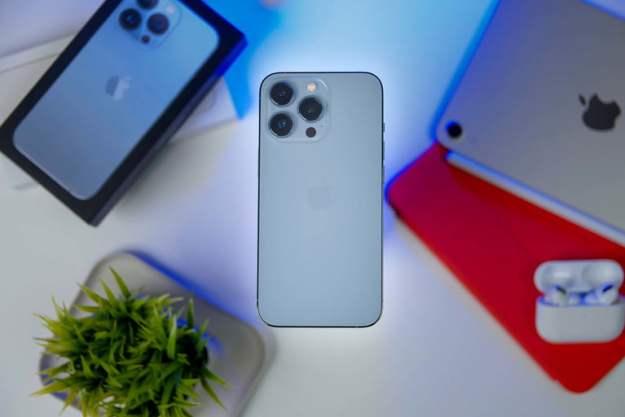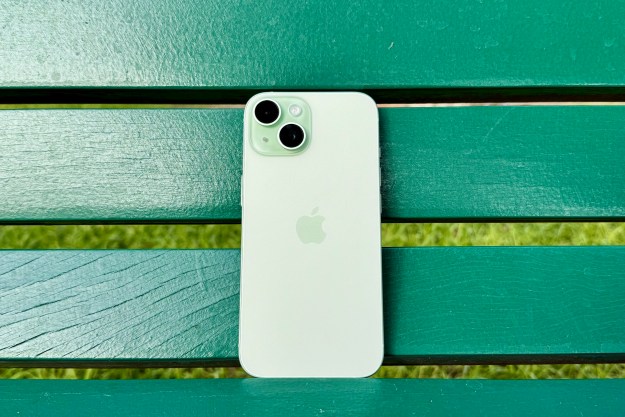An epic battle is coming between concepts, companies, and ideas. They go beyond the platforms I mentioned in the title, and include LiMo, the Linux-based Open Source platform, and Symbian,now fully backed and owned by Nokia. However, the real contenders (because they all know how to build ecosystems and create loyalty) are the ones I call out in the title, so we’ll focus on them. I used the T-Mobile G1 Google phone for about a week, and was very impressed with how good it is. It clearly works best, at the moment, as a Google tools and utilities front end, but that will change. In the mean time, I thought it might be fun to do a quick strengths and weaknesses column on the major players.
Apple’s Weapons and Weaknesses
Apple is growing more rapidly than it has grown since its beginning, and by focusing on the premium side of the market, it has tapped into one of the most enviable profit margins. The company manages to outmarket much larger companies like HP regularly, and has made a monkey out of Microsoft in commercials, until recently, unchallenged. It brings most loyal following of any vendor to the table, along with products that get people to line up for days, and a focus on design that is hard to find in the technology industry. Apple is well ahead with accessories, and even has the majority of car manufacturers building their phones and iPods into cars.
On the other hand, the company is also incredibly controlling, and its telephone lines tend to be limited both in depth and breadth. Apple represents the Model T of phone providers, in that you can have any color as long as it’s black or white, and any size, as long as it is the one that Apple offers. It has a tendency to cover up problems, and its kill-switch capability on the iPhone is largely used to kill applications it believes represent some threat to their control.
Google’s Weapons and Weaknesses
Google is unmatched on the Web, and is one of the brightest stars in Silicon Valley. Recognized as one of the best places to work, the company appears able to simply ask to get top employees to abandon their respective companies, and work for Google. Its revenue stream is near legendary, and it has shown a willingness to allow applications on its devices that may compete with its own offerings. Google also maintains a kill switch, but it’s used to assure to the phones work and maintain the quality of the experience, although also to make sure Google ads display as a way to subsidize the devices. The company is also working with multiple carriers and hardware providers to develop a large number of phone lines, providing plenty of choices.
On the other hand, Google is new to phones, and the first to use its OS is far from the most attractive. It also tends toward arrogance, and has shown little real revenue success outside of their core business to date. The company lacks marketing competence, and appears to struggle with how to sell the phones properly. It’s also one of the newest players to the phone business, and likely to make a number of critical errors before becoming as expert as the rest. Finally, the massive drop in its stock price and trend of eliminating employee benefits are likely sowing the seeds of massive dissatisfaction within the company, creating execution problems.
Microsoft’s Weapons and Weaknesses
Microsoft is one of the most powerful companies in the world, with a massive installed ecosystem that spans the majority of enterprises. It also has a large number of manufacturers and carriers that support its phones, and is one of the most mature, in terms of segment experience, providers in this new smart phones space. Microsoft’s products also connect seamlessly to their entrenched back end offerings like Windows, Windows Server, and Exchange. Historically, its phone have been some of the most practical and affordable models in the segment. The company has been aggressive on security and centralized phone management, and appears to be ahead of the game in enterprise focus. Finally, they have massive financial resources, and could probably buy at least one of the other companies (maybe two).
On the other hand, Microsoft’s Mobile 7 platform, which was supposed to run against the iPhone and Android platforms, is delayed, and the current platform has aged badly. The company also lacks an Application Store, even though it has had a large number of developers working on applications for their platform for some time. The giant seems to be the least agile of all the players, and appears unable to bring the full force of their resources onto the problem.
RIM’s Weapons and Weaknesses
RIM’s Blackberry has been called the Crackberry because of how addicting the device is, giving the company one of the most loyal user bases tied to its phones. In addition, RIM has largely shrugged off Apple to-date, and has one of the easiest-to-use phone products in the segment. Its broad line of phones includes devices with and without keyboards, and even candy bar sized phones. RIM also focuses on a security, and its phones generally come in with the easy blessing of IT managers, top executives, and board members who have become addicted to their own devices. They are typically the most industrial grade and robust phones, and usually boast the longest battery life.
On the other hand, RIM has the least resources of all the companies it competes with, and runs the risk of eventually being acquired, particularly given the current economic situation. For the best results, RIM also requires an expensive redundant server that IT departments aren’t always at all happy about. While the company has done well in the enterprise market, it hasn’t been the biggest hit with consumers. It has lagged in terms of an application store, and been relatively slow to embrace back end services and assure the user experience. The company has also shown a tendency, when in a legal dispute, to put its users at risk, and has damaged customer loyalty a lot as a result.
Calling the Fight
I think RIM is most likely to be acquired to fill out someone else’s line and capture their enterprise business. They simply, alone, can’t scale to the levels of the other players. The others are harder to call, but I think Apple will be hindered by the iPhone’s distribution channel (it’s only provided by a small number of carriers) and line depth. Other companies will seize the lead unless Apple can address these physical distribution issues. Microsoft tends to have problems executing, as showcased by the delay of Mobile 7. In addition, it simply isn’t willing to bring forward the kind of marketing and products that could excite the market. Google, while also very powerful financially, is likely being hurt by employee issues, and remains the most inexperienced of any of the vendors. However, its engineers seem to understand that the back end of these phones will be where both the solution resides, and where the follow-on revenue will likely be generated, giving the company the greatest shot at the top revenue spot.
Who wins? It probably comes down to Microsoft and Google, if we define winning by generating the most revenue and profit, because neither builds its phones, and software is historically much more profitable than hardware. This will be a battle royale, and it will likely come down to the company that builds the best targeted hardware, wraps it with a well funded and well-executed promotional program, and ties off the result with a truly good looking and desirable phone.
Links:
*Digital Trends Podcast: T-Mobile G1 vs. iPhone: Who Wins?
Editors' Recommendations
- I can’t wait for Nothing to launch this stunning phone
- How to schedule a text message on your iPhone
- The first HMD Android phones are here, and they’re super cheap
- Best Verizon new customer deals: Galaxy S24, iPhone and more
- Nomad’s new iPhone case and Apple Watch band may be its coolest yet


